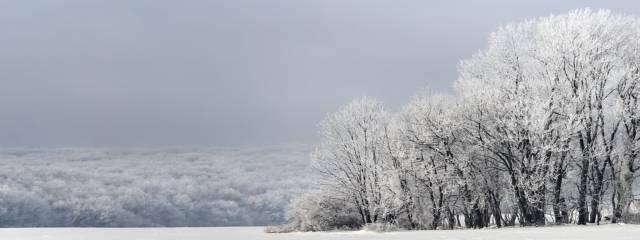Atopic Dermatitis is a recurrent allergic skin disease, characterized by itching, redness, and oozing of the skin all over the body or at major joints, which is a great pain in the hearts of parents! This disease is very common in infants and young children, accounting for about 3-5% of the pediatric population, with 60% of cases occurring within the first year of life and 30% between 1 to 5 years of age. About half of the affected children will also suffer from allergic rhinitis, panting, allergic conjunctivitis, and other diseases, commonly referred to as allergic children.
The author's son is also a patient of this disease. He developed the condition at 3 months old, with his body gradually breaking out in large patches of red rash like a sunset (Figure 1). At that time, the author was in the initial stage of medical practice and was not very familiar with this disease, so he could only regard it as a test from heaven! Under the author's treatment, although the skin symptoms still recurred, their severity decreased, and he finally recovered after more than 3 months. After that, there were occasional minor outbreaks at major joints, which were quickly relieved after treatment with Traditional Chinese Medicine (TCM), and he has not had a recurrence since growing up. During the illness, he never took a single modern medicine or probiotic, nor did he apply any modern medicinal paste.
Figure 1: The author's son's atopic dermatitis
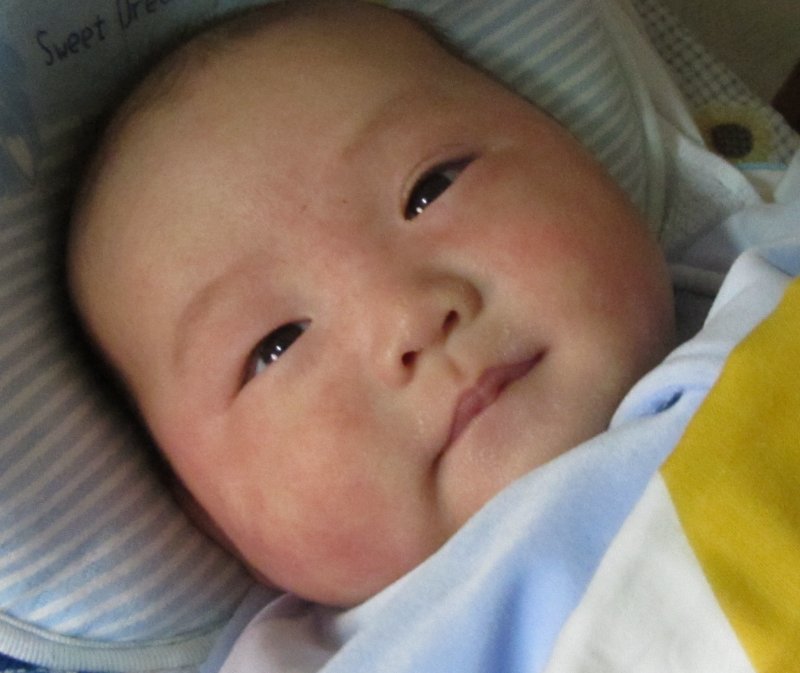
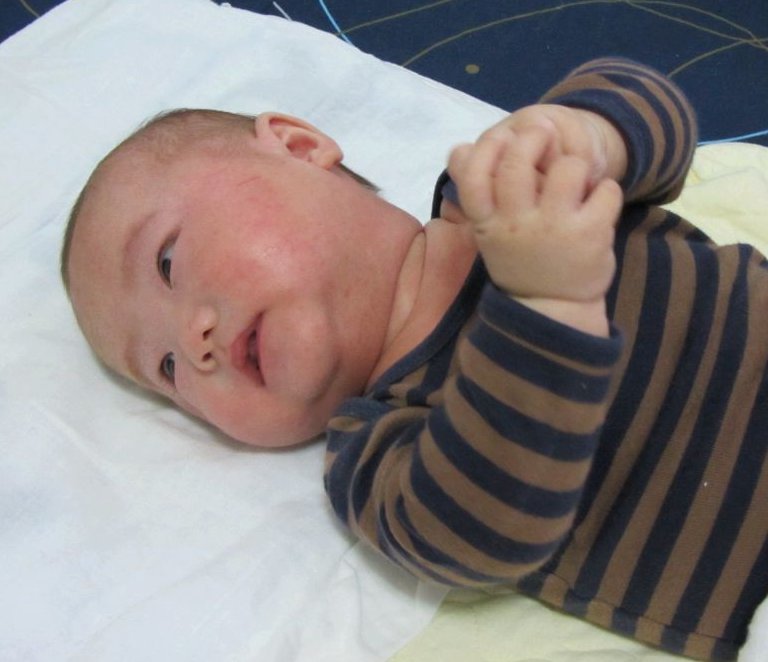

Modern medicine has not yet determined its disease cause, only discovering some clues for reference:
- Common in children: Most will gradually recover before the age of 10-12, with only 5-10% continuing into adulthood.
- Allergic constitution: Children whose parents have allergies have a higher mechanism of disease rate.
- External triggers: Certain diets, environments, temperatures, humidity, or emotional changes can easily induce or worsen the condition.
Modern medicine does not understand the disease cause of this condition, so its main treatment can only passively control:
- Antihistamines: Passively inhibit the body's inflammatory response, not treating the root cause, with recurrence upon stopping the medication, requiring frequent use. The main side effect of first-generation antihistamines is drowsiness.
- Corticosteroids: Passively inhibit the body's immune system, also not treating the root cause, with recurrence upon stopping the medication. Long-term use can have significant side effects, and long-term application of corticosteroid-containing medicinal paste can cause skin atrophy and thinning.
- Antibiotics: Used when the skin is scratched to redness and swelling, to combat bacterial infections, also not treating the root cause. Long-term use of antibiotics can also have many adverse side effects.
- Probiotics: Some patients experience slight effectiveness, but most do not.
According to statistics, 80% of atopic dermatitis patients are dissatisfied with modern medical treatment, and 40% have consulted more than 5 doctors. It is clear that modern medical treatment uses chemical drugs to suppress the body's immune system, temporarily stopping inflammation and itching. If a patient is lucky enough to recover, it is mainly due to their own recovery, not the modern medicine.
In TCM, this disease is often divided into several patterns (models):
- Wind-Heat: That is, the "signs of fire-heat" are more pronounced, with the affected area characterized mainly by redness, swelling, and itching, with little exudate, commonly seen in the acute stage of attack.
- Dampness-Heat Exuberance: "Heat" refers to redness, swelling, and itching, while "dampness" refers to an abundance of moisture, with a lot of watery exudate visible, also belonging to the acute stage of attack.
- Blood Deficiency and Wind-Dryness: The patient's blood and qi are insufficient to nourish the skin, leading to dryness, roughness, and scaling of the affected area, with long-term pigmentation or lichenoid changes, mostly seen in the chronic stage.
- Spleen Deficiency and Dampness Exuberance: The patient's spleen function is low, leading to an imbalance of dampness, with the redness, swelling, and heat signs of the affected area not obvious, mostly dull skin color, with blisters or exudate, or possibly accompanied by loose stools, easy fatigue, gastrointestinal bloating, and other symptoms of Spleen Deficiency, mostly seen in the chronic stage.
Clinically, few patients exactly match the above standard pattern types; most are mixed types of the above, or may be pattern types not mentioned above. The advantage of TCM over modern medicine lies in: discovering imbalances in the function of the zang-fu organs, or deficiencies in qi and blood, or heavy dampness, or excessive fire, which are also key factors in the onset of disease. Adjusting the constitution is about adjusting these: qi deficiency refers to low function, tonifying qi can enhance function; yin deficiency and blood deficiency refer to insufficient nourishing materials, nourishing yin and tonifying blood can replenish them; heavy dampness requires enhancing spleen and kidney function to eliminate dampness; excessive fire-heat requires clearing heat and purging fire to cool down.
Figure 2
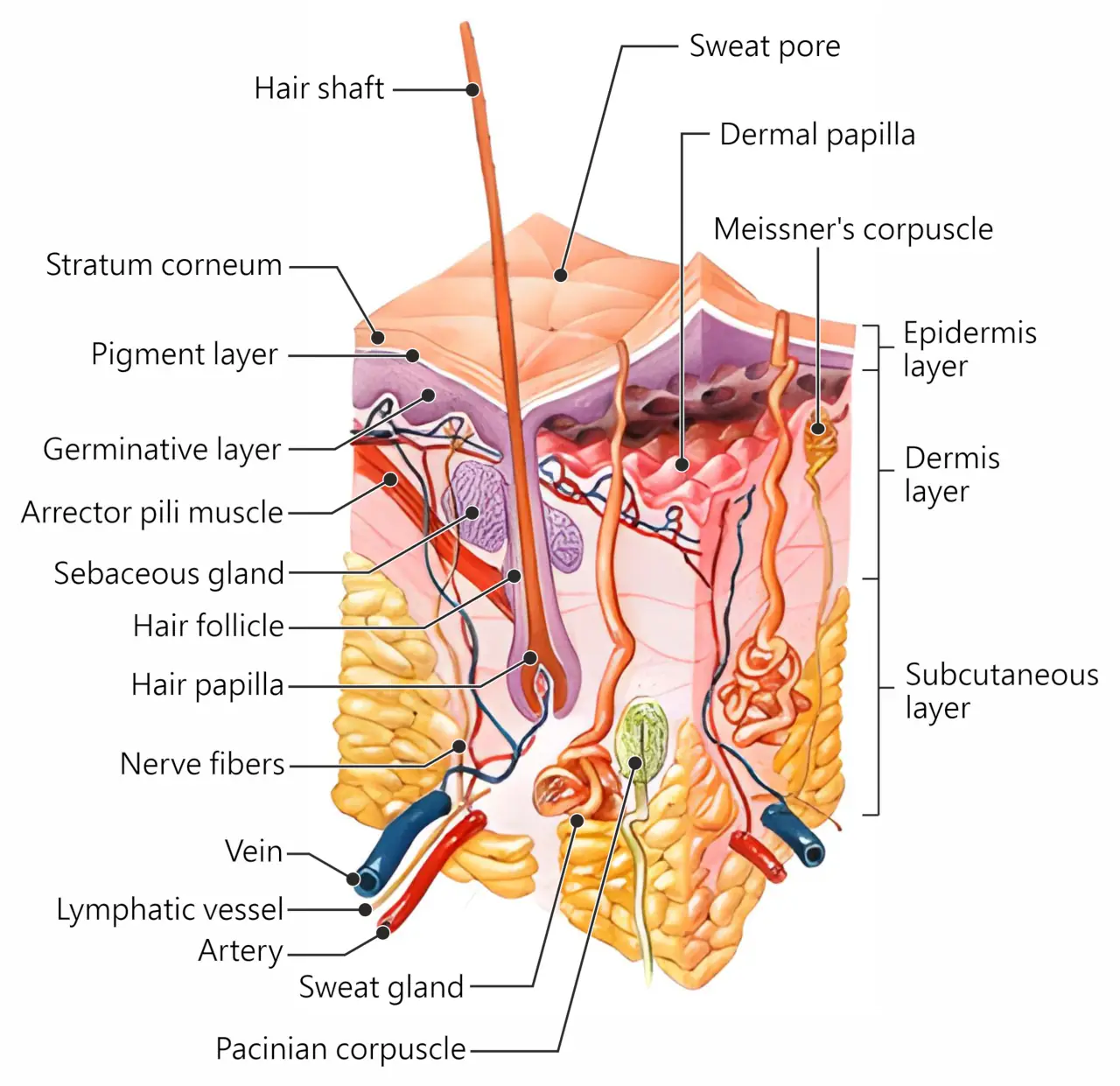
US-Gov, Public domain, via Wikimedia Commons
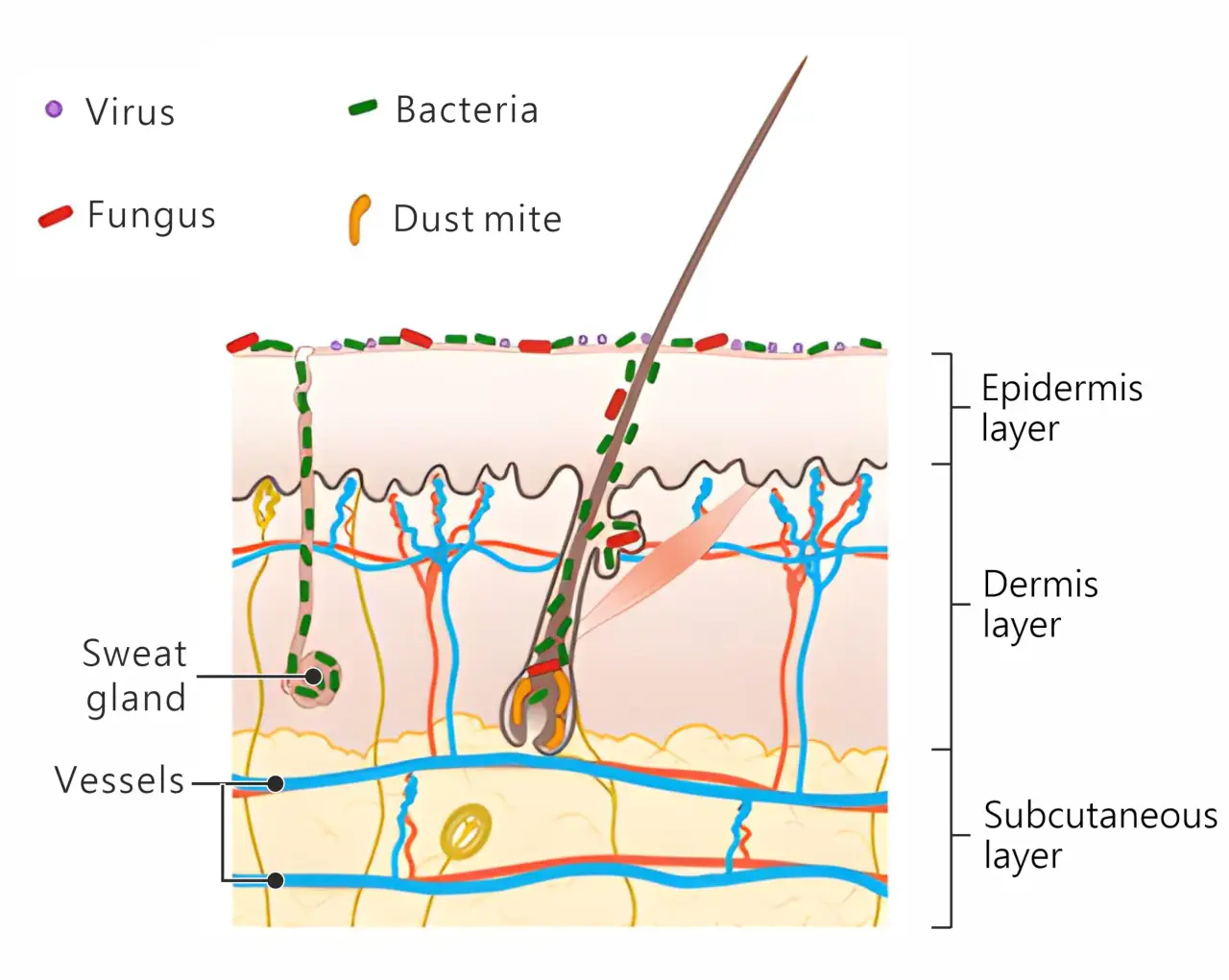
This image is licensed.
Some may ask, why does this disease often occur in children? The answer is: Children differ from adults in the following characteristics:
- Children are in a period of rapid growth and development, and their bodies often consume a large amount of resources (the "yin" in TCM) for brain and body growth. Therefore, children are prone to Yin Deficiency with Effulgent Fire, and are easily prone to Excessive Internal Heat (heatiness).
- Children's digestive systems are immature, and their teeth are still developing. They often suffer from insufficient chewing, poor digestion, and stomach distension, which affect gastrointestinal function and nutrient absorption. Therefore, children are prone to Spleen Deficiency, Blood Deficiency, and are susceptible to dampness accumulation.
- Children's immune systems are still developing, and most microorganisms are unfamiliar to them. As a result, children's immune systems are prone to over-sensitivity and indiscriminate attacks.
With the above understanding, we can simultaneously address both the internal body and the skin surface to quickly and effectively cure atopic dermatitis:
- Internal: Take Chinese medicinals to nourish the deficiencies of zang-fu organs' qi and blood, remove excessive heat and dampness, and improve the constitution.
- External: Apply Chinese medicinal ointments to inhibit the growth of skin surface microorganisms, calm overactive immune cells, moisturize damaged skin, and promote skin repair.
Among the rich variety of traditional Chinese medicinals, some have been proven to have broad-spectrum antibacterial and antifungal pharmacological effects, some can stabilize the immune system, and some can moisturize and repair the skin. These have been proven to have almost no side effects with long-term use. By selecting medicinal materials with appropriate cold and heat properties, extracting their essences, and formulating them into creams for application on the affected areas, combined with internal use of Chinese medicinals to adjust the constitution, the treatment will undoubtedly be superior to modern medicine, making the cure of atopic dermatitis a simple task.
Additional care instructions:
- Once the skin is scratched, it becomes prone to harboring dirt and impurities. Educate children to pat instead of scratch, and regularly trim and smooth their nails or use finger cots. Breathable gauze can also be used to cover and protect the affected areas to prevent scratching.
- Early to bed and early to rise; children should ideally go to bed by 9-10 pm. Staying up past 11 pm is considered staying up late, and the later they sleep, the more they are prone to "Excessive Internal Heat" (heatiness) and reduced immunity, which can exacerbate dermatitis.
- Wear cotton clothing and avoid wool, nylon, and other fabrics.
- If the skin is too dry, apply Ziyun Gao or high-quality moisturizers to keep it hydrated.
- Use air conditioning in hot weather to avoid heat and sweat, which can worsen skin inflammation.
- Moderate exercise is beneficial for allergic constitutions.
- Reduce potential life stress and guide patients to maintain an optimistic mood.
- Maintain a light and balanced diet, it is recommended to steam or boil food, avoid overcooking and excessive use of seasonings. Pay attention to and avoid foods that may trigger allergies, as these can vary from person to person. Generally, avoid various dry and crispy foods (such as biscuits, nuts, potato chips), ice-cold drinks, fried, grilled, or roasted foods, and foods that are too spicy, salty, or oily. Avoid snacks and beverages produced in factories that contain mouth-melting chemical additives, colorings, and flavorings. Try to give natural and juicy snacks, such as dried fruits, soft candies, jellies, puddings, grass jelly, aiyu jelly, and chilled fruits without ice.
- Avoid using soaps, body washes, and laundry detergents with excessive chemical additives. Try to use natural detergents or clean with water.
- Dust mite prevention: Avoid laying carpets or tatami mats. Use anti-mite mattress covers (full set), pillowcases, and quilt covers. Use a mite remover to clean the mattress, quilt, and pillow once a week. 60°C hot water can kill dust mites, but sun exposure is less effective. Use a dehumidifier to control humidity. Dust mites have difficulty surviving when the humidity is below 50%.
- Avoid keeping pets indoors.
- Use an air purifier to reduce PM2.5 concentration.
- For severe redness and inflammation caused by excessive scratching, do not rule out temporarily using modern medicine for symptomatic relief.
Shen Yaozi, wrote in the autumn of 2019, the year of Ji Hai (己亥).




